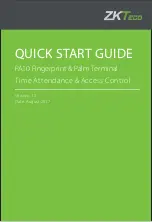AN-6094
© 2012 Fairchild Semiconductor Corporation
www.fairchildsemi.com
Rev. 1.0.0 • 9/27/12
3
3. Design Consideration
Figure 5. Operation Range of Charger with CC/CV
A battery charger power supply with CC output requires
more design consideration than the conventional power
supply with a fixed output voltage. In CC operation, the
output voltage changes according to the charging
condition of battery. The supply voltage for the PWM
controller (V
DD
), which is usually obtained from the
auxiliary winding of the transformer, changes with the
output voltage. Thus, the allowable V
DD
operation range
determines the output voltage variation range in CC
regulation. FAN302 has a wide supply voltage (V
DD
)
operation range from 5 V up to 26.5 V, which allows
stable CC regulation even with output voltage lower than
a quarter of its nominal value.
Another important design consideration for CC operation
is that the transformer should be designed to guarantee
DCM operation over the whole operation range since the
output current can be properly estimated only in DCM, as
described in Section 2. As seen in Figure 5, the MOSFET
conduction time (t
ON
) decreases as output voltage
decreases in CC Mode, which is proportional to the square
root of the output voltage. Meanwhile, the diode current
discharge time (t
DIS
) increases as the output voltage
decreases, which is inversely proportional to the output
voltage. Since the increase of t
DIS
is dominant over the
decrease of t
ON
in determining the sum of t
ON
and t
DIS
, the
sum of t
ON
and t
DIS
tends to increases as output voltage
decreases. When the sum of t
ON
and t
DIS
are same as the
switching period, the converter enters CCM. FAN302 has
a frequency-reduction function to prevent CCM operation
by extending the switching period as the output voltage
drops, as illustrated in Figure 6. The output voltage is
indirectly sensed by sampling the transformer winding
voltage (V
SH
) around the end of diode current discharge
time, as illustrated in Figure 4. The frequency-reduction
profile is designed such that the on-time remains almost
constant even when the output voltage drops in CC Mode.
CC
G
S
V
f
−
=
Δ
Δ
Figure 6. Frequency Reduction in CC Mode

















